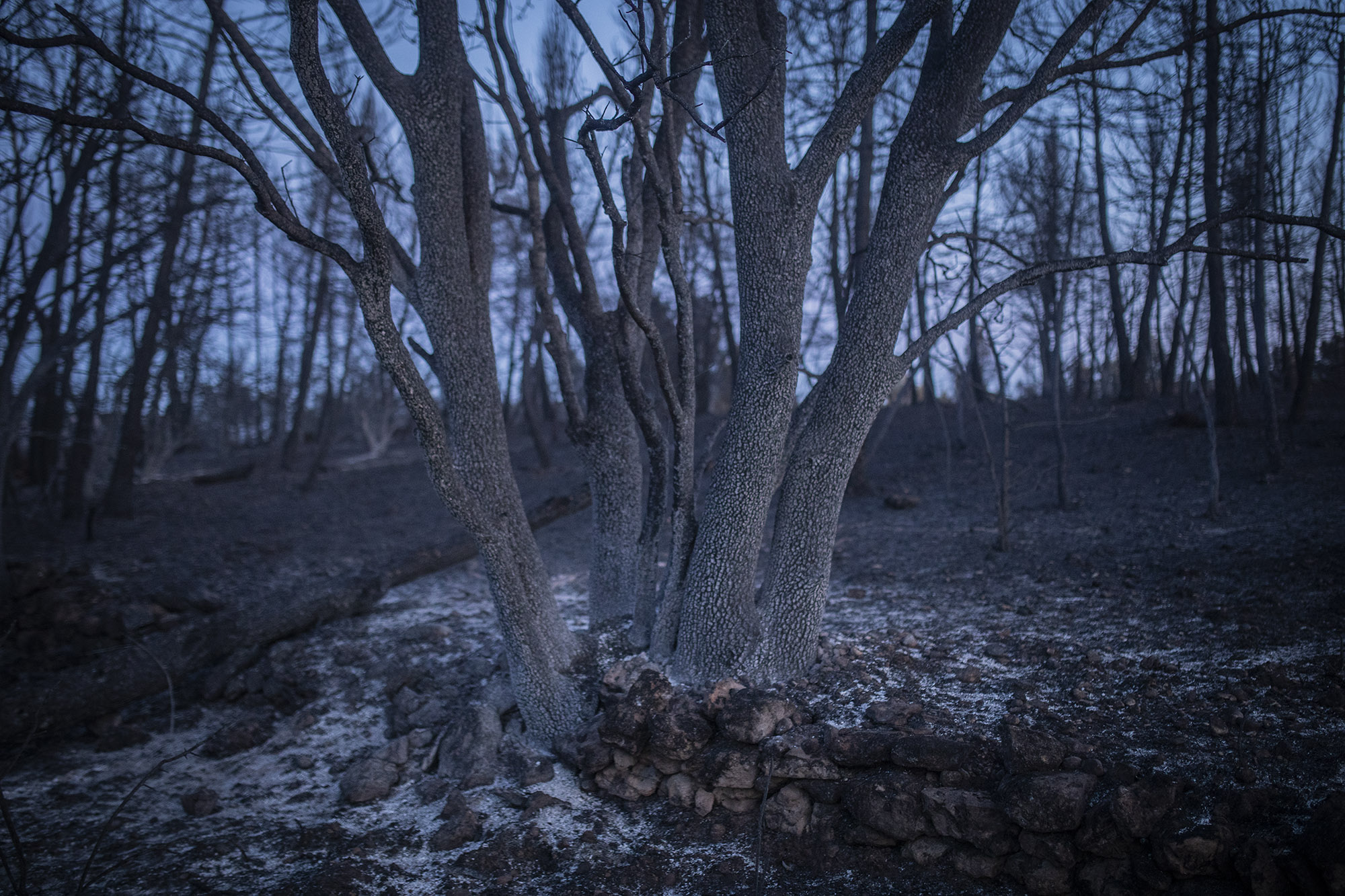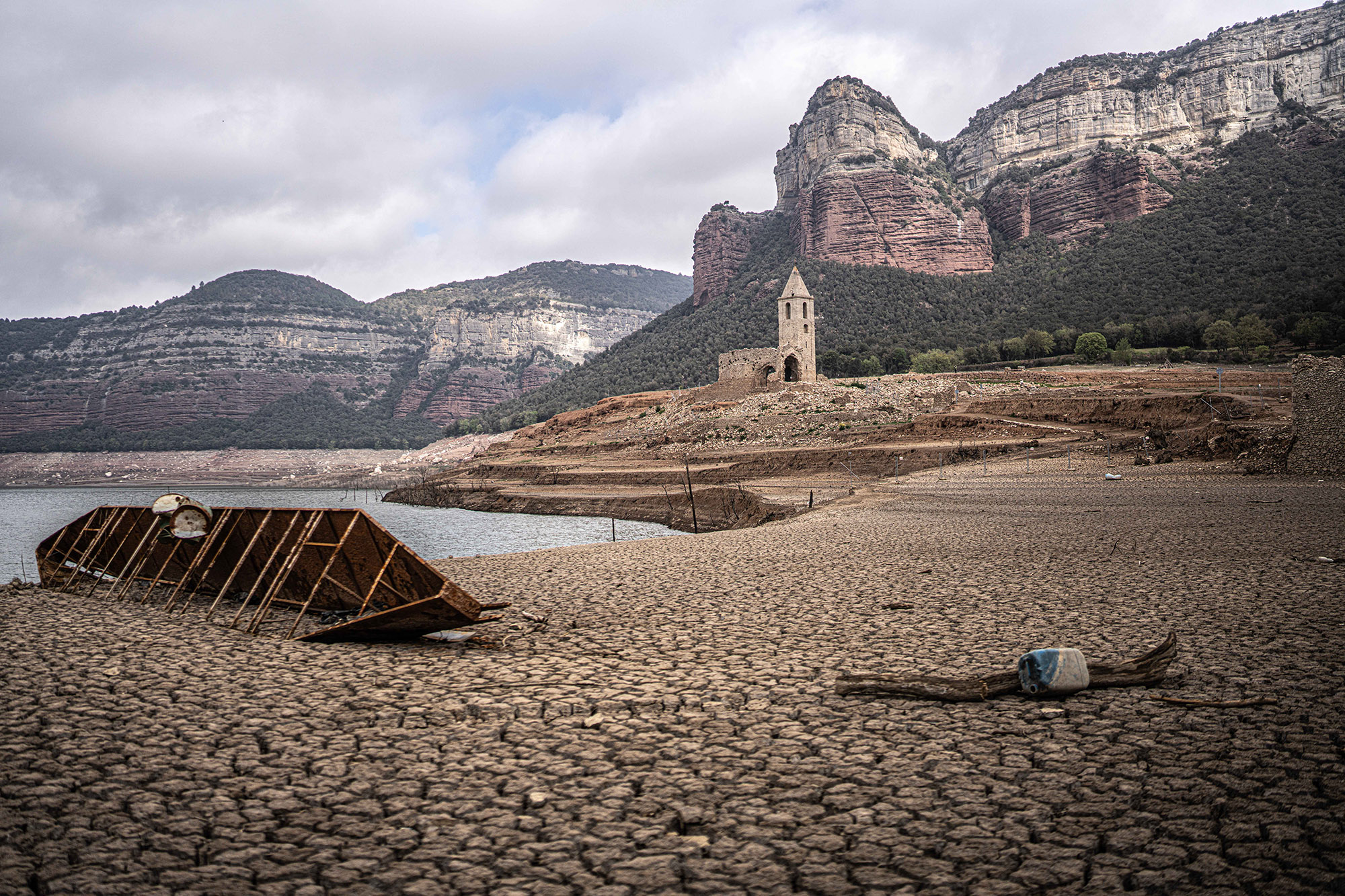A partially burned fire risk sign in a forest ravaged by flames in Spain’s second largest fire of 2022, Torás municipality, Castellón province. © Santi Palacios for Sonda Internacional
Project summary
#IIFFsondaMega Fires: Beyond Extinction
This project seeks to illustrate the circumstances surrounding the mega fires devastating Spain by generating a central guide to this phenomenon, presenting the new fire behavior and explaining its consequences on the land and the people. It will also compile the strategies for combating and living alongside them; unearth how ecosystems recover and utilize them; and share the solution projects mitigating their proliferation. As always, the project will tell these stories through photo, video and graphic resources as the main tool. Because seeing is essential to understanding.
Conversations #01: What is a mega fire?
Spanish Lapland
Fuelling a Mega Fire
Facing Fire
‘Lumes’ by Adra Pallón
Join our crowdfunding!
Take the opportunity to directly support in-depth journalism on the climate crisis
Donate
4 May 2023
The Iberian Peninsula is among the territories in Europe most affected by forest fires. In the midst of a climate crisis that results in more intense and prolonged droughts, the behavior of large fires has raised fears that Spain and Portugal are entering a new era of fire activity. In 2022, both countries led the list by number of fires and destroyed territory in Europe, with approximately 427,768 hectares burned due to 2,726 fires (315,705 hectares in Spain and 112,063 in Portugal)*. The weather conditions both countries are experiencing have foreshadowed even more turbulent fire seasons in the future.
We started this project with countless unanswered questions on a topic as intricate as it is ever-evolving. Our first step was to spend six months researching and building a close network of experts. Now we have more questions than ever, but a far better clue as to how to approach such a complex phenomenon through visual journalism.
Why do forest fires occur?
Are there more now than before? Are they now larger and more catastrophic?
What are the risk factors? How are they influenced by climate change?
What is being done to avoid them and mitigate their effects?
In the decades since fire records began, much has changed across the Iberian Peninsula: the environment, land use, forestry and environmental protocols, legislation, demographics, temperatures, and precipitation rates. As a result, the way fires behave has also changed. Large, destructive forest fires are becoming more frequent; At the same time, they bring greater complexities when it comes to controlling and extinguishing them.

Forest devastated by flames in the second largest fire that took place in Spain in 2022, municipality of Toras, province of Castellón. © Santi Palacios for Sonda International
For these reasons and as they are one of today’s most critical environmental challenges, we have decided to focus this project on mega fires: a destructive and often misunderstood force, prematurely thrusting the Iberian Peninsula into a new chapter of firefighting. A note: While there is no international consensus on the specifications of a mega fire, for the purpose of this report, and under the guidance of leading experts, we will define them as fires that burn an area of more than 5,000 hectares or emit more than 10,000 kilowatts of energy per square meter.
The structural causes of these mega fires are varied yet intrinsically linked, inflamed by the pervasive reach of a worsening climate crisis acting as a catalyst and an accelerator. Mega Fires: Beyond Extinction delves, through visual journalism, into the causes and consequences of mega fires and the work being done to counter them.
What happens before, during and after the flames?
How are the causes of these mega fires linked?
What is being done to prevent them?
This project seeks to illustrate the circumstances surrounding the mega fires devastating the territory by generating a central guide to this phenomenon, presenting the new fire behavior and explaining its consequences on the land and the people. It will also compile the strategies for combating and living alongside them; unearth how ecosystems recover and utilize them; and share the solution projects mitigating their proliferation. As always, the project will tell these stories through photo, video and graphic resources as the main tool. Because seeing is essential to understanding.
Map:
- Data analysis and visualization: Javi Aparicio
- See map in full screen
Methodology:
- The fires are represented by circles geo-positioned in the municipality where the fire started, therefore, the location of the fire is not exact since the coordinates of the municipality are used.
- Orange circles represent large fires in which the burned forest area is greater than or equal to 500 hectares.
- Red circles represent mega fires equal to or greater than 5,000 hectares.
The size of the circles are proportionate to the hectares burned.
Sources:
- Data from 1983 to 2015 has been obtained from the Spanish Government’s open data catalog.
- Non-definitive data from 2016 to 2021 has been obtained from the Ministry for the Ecological Transition & the Demographic Challenge.
- Data from 2022 has been obtained from RTVE reports.
How do we work?
This project is only possible thanks to the collaboration of experts and, above all, the community of partners who support our visual journalism on the climate crisis.
We are a small non-profit media outlet specializing in long-form journalism. Our primary means of financing is through donations: the project is already underway, but we need support to complete it.
If you are interested in mega fires and the climate crisis and want to support the development of this project, you can become a monthly or annual member (or make a one-time donation) here.
Can you help us?
And if you have any questions or suggestions, do not hesitate to contact us.
Director: Mikel Konate | Text: Lily Mayers | Video: Pablo Tosco, Mikel Konate and Simón Casal | Photography: Pablo Tosco and Santi Palacios | Design and illustration: Jorge Mileto | Text editing: Maribel Izcue | Data analysis and visualization: Javi Aparicio | Photography and video assistant: Júlia Cussó | Web development: Full Circle | Production: Sonda International.
*Data on the number of fires and burnt areas has been sourced from the annual report by the European Forest Fire Information System (EFFIS)
*This piece has been updated on September 25, 2023.


